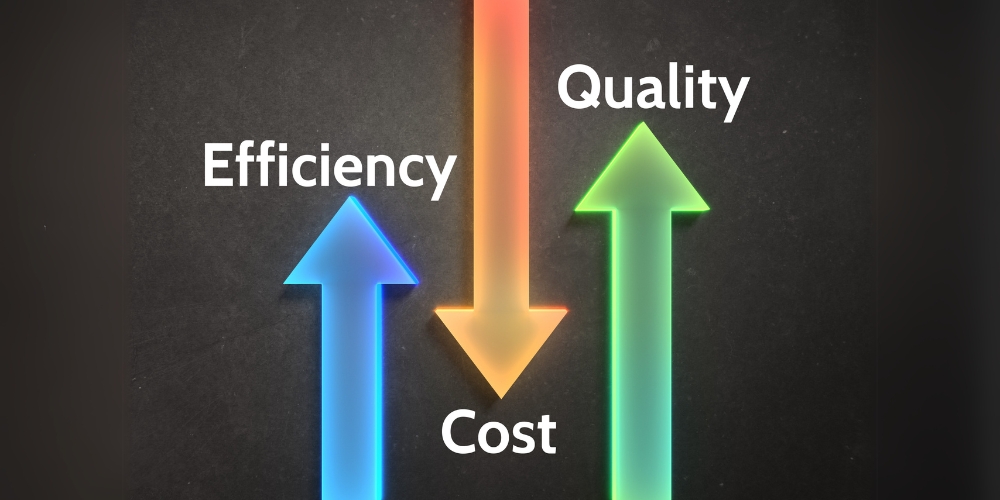In a world increasingly aware of environmental challenges, the architect’s role transcends the mere creation of aesthetically pleasing and functional spaces. Today, more than ever, the architect assumes a leading position as a fundamental agent of sustainability, with the responsibility and opportunity to integrate ecological solutions from the very first lines of a project.
Architecture has always been intrinsically linked to the environment, shaping and being shaped by it. However, the climate emergency and the need to preserve natural resources drive a redefinition of this relationship. It is no longer about applying “green labels” as an add-on, but about incorporating sustainability into the DNA of every building.
Why “From Conception”:
Integrating ecological solutions in the initial phase of a project is crucial for several reasons:
- Amplified Impact: Decisions made early on, such as a building’s solar orientation, the use of natural ventilation, and site selection, have an exponentially greater impact on the building’s energy and environmental performance throughout its entire lifespan.
- Cost Optimization: Counterintuitively for some, thinking about sustainability from the beginning can lead to significant savings. Well-planned passive solutions reduce the need for expensive mechanical systems and long-term energy consumption.
- Project Coherence: Sustainability ceases to be an “accessory” and becomes a guiding principle of design, resulting in more cohesive, innovative, and uniquely identifiable projects.
- Reduced Waste: Planning that considers the lifecycle of materials and construction efficiency minimizes resource waste during both the construction phase and future maintenance or demolition.

Essential Strategies for the Sustainable Architect:
The architect has a wide range of strategies to transform their projects into examples of sustainability:
Bioclimatic Design:
- Local Climate Analysis: Understanding the local climate (sun, winds, rain, temperature) is the first step.
- Intelligent Solar Orientation: Maximizing natural light and heat gain in winter, while protecting from excessive heat in summer.
- Cross Natural Ventilation: Designing openings and layouts that promote air circulation, reducing the need for air conditioning.
- Effective Solar Protection: Using brise-soleils, eaves, vegetation, and other elements to control direct solar incidence.
Conscious Material Selection:
- Low Environmental Impact Materials: Prioritizing recycled, recyclable, renewable, regional materials (lower transportation costs and CO2 emissions), and those with low energy consumption in their production (low embodied energy).
- Durability and Maintenance: Opting for resistant materials that require little maintenance, increasing the building’s lifespan.
- Occupant Health: Avoiding materials that emit harmful volatile organic compounds (VOCs).
Efficient Water Management:
- Rainwater Harvesting and Reuse: For non-potable uses like irrigation and cleaning.
- Greywater Treatment Systems: Reusing water from sinks and showers.
- Sustainable Landscaping: Using native or climate-adapted plants that require less water.
- Efficient Fixtures: Water-saving sanitary devices.
Energy Efficiency:
- Adequate Thermal Insulation: Reducing unwanted heat loss and gain.
- High-Performance Windows: Double glazing or solar control films.
- Efficient Lighting: Prioritizing natural light and using LED lamps and lighting control systems.
- Renewable Energies: Integration of photovoltaic solar panels and solar water heating systems.
Waste Reduction and Circular Economy:
- Design for Disassembly: Considering the possibility of reusing components at the end of the building’s life.
- Minimizing Construction Waste: Modular planning and prefabrication.
The Challenge and the Opportunity:
Integrating sustainability so deeply requires the architect to have multidisciplinary knowledge, continuous updating, and the ability to dialogue and convince clients. Often, it is necessary to demystify the idea that “green” is always more expensive, demonstrating the long-term economic benefits and the added value of a truly sustainable enterprise.

Being an architect who acts as an agent of sustainability is not just a trend, but a pressing need and an immense opportunity to contribute to a more balanced and healthy future. By embracing this responsibility from conception, the architect reaffirms their social role and their ability to transform the built environment into a positive legacy for future generations.
